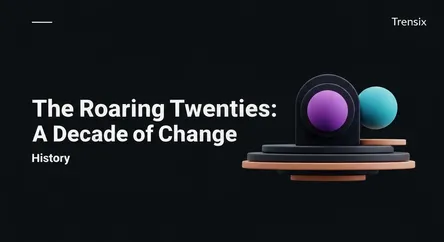History
The Roaring Twenties: A Decade of Change

An overview of the Roaring Twenties, a period of dramatic economic growth, cultural dynamism, and social change in the 1920s.
What is it?
The Roaring Twenties refers to the decade of the 1920s, a period of significant economic prosperity and dramatic social, cultural, and technological change, particularly in North America and Europe. Emerging from the devastation of World War I, the era was characterized by a booming economy that led to a consumer culture, with widespread adoption of new technologies like automobiles and radios. Culturally, it is often called the "Jazz Age," as jazz music blossomed and new dances became popular. This period also saw the rise of the "flapper," a new, emancipated woman who challenged traditional norms by cutting her hair short, wearing knee-length dresses, and embracing greater social freedom.
Why is it trending?
The Roaring Twenties often trends as a historical parallel when society emerges from major global crises. Following the COVID-19 pandemic, many drew comparisons to the 1920s, which followed World War I and the Spanish Flu pandemic. This has sparked discussions about the potential for a new era of economic boom and cultural exuberance. The decade's iconic fashion, Art Deco design, and timeless stories like "The Great Gatsby" ensure its enduring presence in popular culture, frequently revisited in films, fashion, and themed events. The era represents a dramatic break with the past and an embrace of modernity, a theme that resonates during times of rapid change.
How does it affect people?
The Roaring Twenties profoundly affected daily life. For the first time, more Americans lived in cities than on farms, and the nation's wealth more than doubled. Mass production made consumer goods like cars and electric appliances affordable for the middle class, transforming domestic life and creating an economy built around consumerism. Women gained new freedoms, including the right to vote in the U.S. in 1920, and entered the workforce in greater numbers. The Great Migration of African Americans to northern cities led to cultural flowerings like the Harlem Renaissance. However, it was also a time of conflict, with Prohibition leading to organized crime and deep cultural clashes between modern urban and traditional rural values.